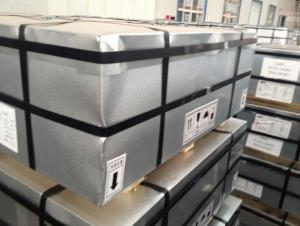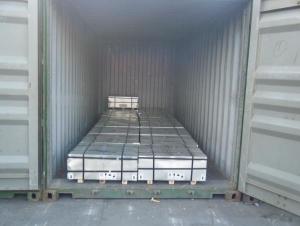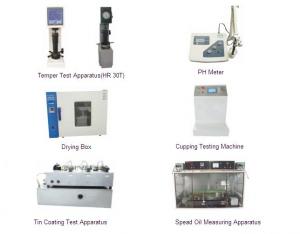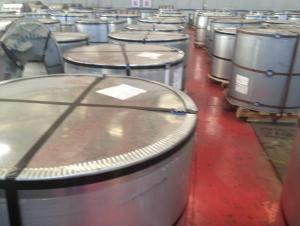Tinplate For Edible Oil Can-CHBA
- Loading Port:
- China Main Port
- Payment Terms:
- TT or L/C
- Min Order Qty:
- 20 Tons~25 Tons m.t.
- Supply Capability:
- 40000 MT Per Month m.t./month
OKorder Service Pledge
OKorder Financial Service
You Might Also Like
General information of Tinplate For Edible Oil Can
Steel Type | MR |
Temper (BA&CA) | T1~T5, DR8 |
Coating | 2.8~8.4g/m2 |
Thickness & Tolerance | 0.15~0.5mm (Tolerance:±0.01mm) |
Width & Tolerance | 600~1000 mm(Tolerance: +2/-0mm) |
I.D | 508 MM |
Coil Weight | 3~10 MT |
Passivation | 311 |
Oiling | DOS |
Surface Finish | Bright ,Stone ,Silver ,Matte |
Min Order | 25 Tons for 1 20 feet FCL |
Package | Seaworthy Export Standard Wooden Pallet |
Standard Available | GB/T2520-2000, JIS G3303, ASTM A623, BS EN10202 |
Lead Time | 35 days after receiving buyer's original L/C or Prepayment |
Special specifications are available on customers' requirements. | |
Technical data of Tinplate For Edible Oil Can
Chemical Composition(%) | Mechanical Property |
C:0.02~0.04 | Yield Strength: (Mpa):280~320 |
Si:0.01~0.03 | TensileStrength: (Mpa):340~390 |
Mn:0.18~0.22 | Elongation:20%~30% |
P:0.014~0.016 | ------------- |
S:0.006~0.009 |
Application of Tinplate For Edible Oil Can
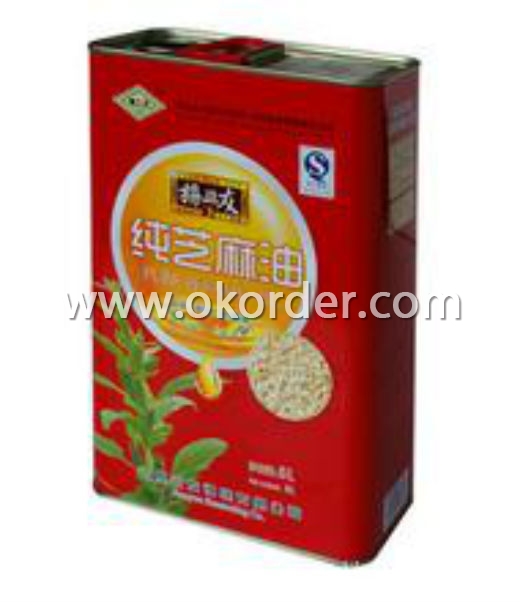

Tinplate is widely used for making all types of containers such as artistic cans, tea cans, painting cans,
chemical package cans and metal printing etc. Its applications are not limited to containers; recently,
tinplate has also been used for making electrical machinery parts and many other products.
Equipment and Facility of Tinplate
Tin Coating Line of Tinplate For Edible Oil Can
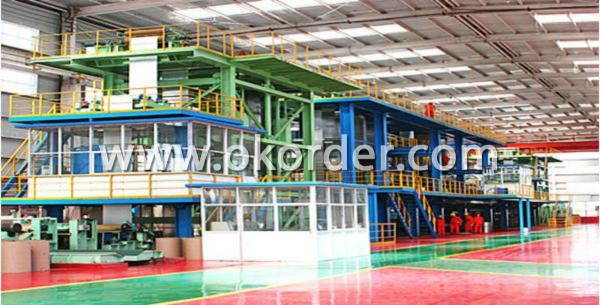
Cold Rolling Mill Batch Annealing Furnace
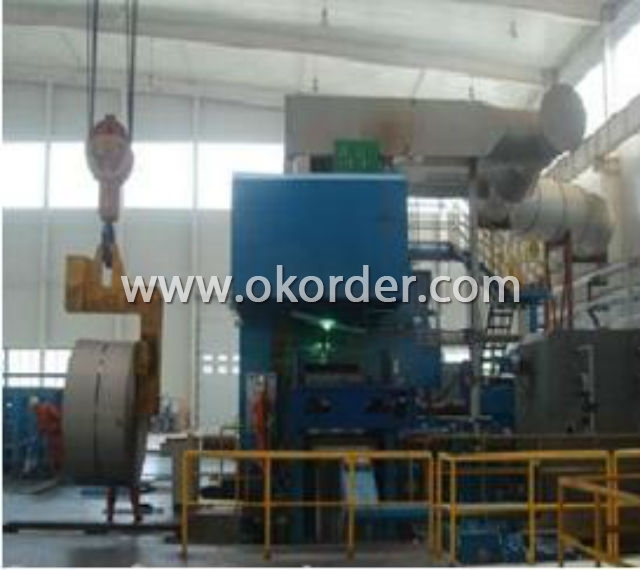

Cutting Line Stock Area
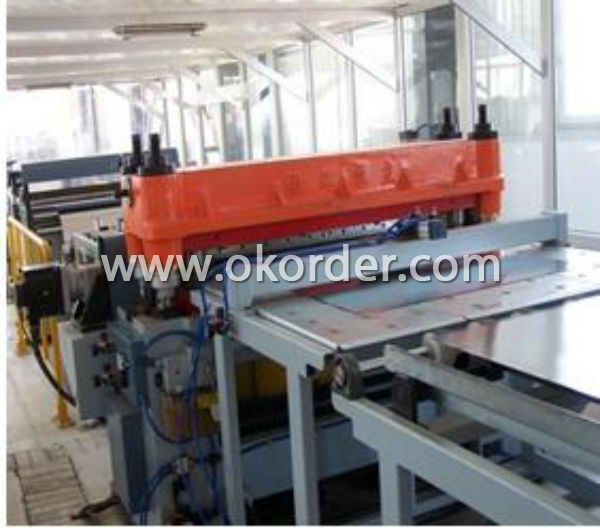

Quantity Control System of Tinplate
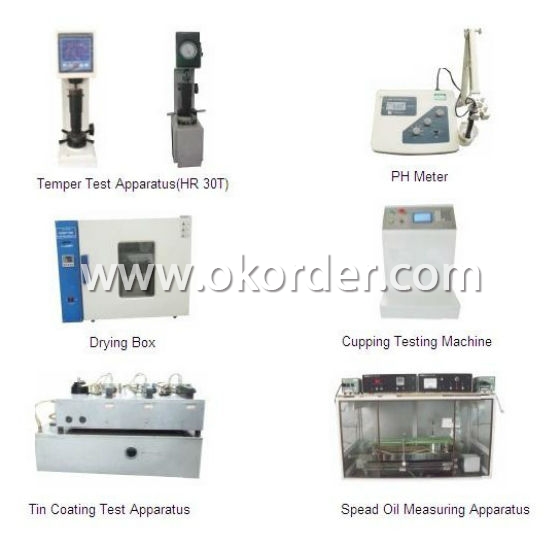
- Q:What are the common sizes and shapes of tinplate containers?
- Common sizes and shapes of tinplate containers include round cans, rectangular tins, and square boxes. The sizes of these containers can vary, but some standard sizes include 8-ounce, 16-ounce, and 32-ounce cans.
- Q:How is tinplate coated with tin?
- Tinplate is typically coated with tin through a process called electroplating, where a thin layer of tin is deposited onto the surface of the tinplate using an electric current. This electroplating process helps to protect the iron or steel base of the tinplate from corrosion and also provides a smooth, shiny finish.
- Q:Can tinplate be used for packaging personal care products?
- Yes, tinplate can be used for packaging personal care products. Tinplate is a commonly used material in the packaging industry due to its durability, corrosion resistance, and ability to maintain product quality and freshness. Its versatility makes it suitable for various types of products, including personal care items.
- Q:Can tinplate be used for signage?
- Yes, tinplate can be used for signage. It is a versatile material that can be easily shaped and printed on, making it suitable for various signage purposes.
- Q:How does tinplate compare to tin-free steel in terms of properties and applications?
- Tinplate and tin-free steel have distinct properties and applications. Tinplate, which is steel coated with a thin layer of tin, offers excellent corrosion resistance, formability, and solderability. It is commonly used in the food and beverage industry for making cans, containers, and closures due to its ability to preserve the product's quality and prevent contamination. On the other hand, tin-free steel, also known as electrolytic chromium-coated steel, provides superior paint adhesion, scratch resistance, and weldability. It finds applications in manufacturing various products like aerosol cans, automotive parts, and appliances that require durability and aesthetic appeal. Ultimately, the choice between tinplate and tin-free steel depends on the specific requirements of the application at hand.
- Q:How does tinplate compare to other packaging materials in terms of weight?
- Tinplate is relatively lightweight compared to other packaging materials such as glass or stainless steel, making it a favorable choice for various industries.
- Q:How does tinplate contribute to the reliability of telecommunications devices?
- Tinplate contributes to the reliability of telecommunications devices by providing a protective coating that prevents corrosion and ensures longevity. It helps safeguard the internal components of these devices from external factors such as moisture, humidity, and oxidation, ensuring uninterrupted functionality and improved performance. Additionally, tinplate's conductivity properties enable efficient transmission of signals and reduce electromagnetic interference, further enhancing the reliability of telecommunications devices.
- Q:Can tinplate be used for paint cans?
- Yes, tinplate can be used for paint cans. Tinplate is a commonly used material for manufacturing paint cans due to its durability, corrosion resistance, and ability to hold paint effectively.
- Q:What are the environmental benefits of using tinplate?
- Tinplate has a number of environmental benefits. Firstly, it is highly recyclable, meaning that it can be used and reused multiple times without losing its quality or properties. This reduces the need for raw materials and decreases the amount of waste generated. Additionally, tinplate is often used as packaging material, particularly in the food industry, where its barrier properties help to prevent spoilage and extend the shelf life of products. This can reduce food waste and the associated environmental impact. Lastly, tinplate is known for its durability, which means that products made from tinplate tend to have a longer lifespan, reducing the overall demand for new products and minimizing waste generation.
- Q:What are the main factors influencing the profitability of tinplate manufacturers?
- The main factors influencing the profitability of tinplate manufacturers include the cost of raw materials, such as steel, tin, and other alloys, as well as fluctuations in their prices. Additionally, factors such as energy costs, labor expenses, and transportation costs play a significant role in determining profitability. Market demand and competition also impact profitability, as manufacturers need to adapt to changing market trends and maintain a competitive edge. Furthermore, technological advancements, production efficiency, and economies of scale can influence profitability by reducing production costs and improving overall operational efficiency.
1. Manufacturer Overview |
|
|---|---|
| Location | Hebei,China |
| Year Established | 2009 |
| Annual Output Value | Above US$100 Million |
| Main Markets | North America;South America; Eastern Europe Southeast Asia; Africa; Mid East Eastern Asia; Western Europe; Central America Northern Europe; Southern Europe; Domestic Market |
| Company Certifications | HACCP;ISO 9001:2008;ISO 14001:2004 |
2. Manufacturer Certificates |
|
|---|---|
| a) Certification Name | |
| Range | |
| Reference | |
| Validity Period | |
3. Manufacturer Capability |
|
|---|---|
| a)Trade Capacity | |
| Nearest Port | Tianjin |
| Export Percentage | 11% - 20% |
| No.of Employees in Trade Department | 6-10 People |
| Language Spoken: | English;Chinese |
| b)Factory Information | |
| Factory Size: | Above 270,000 square meters |
| No. of Production Lines | Above 12 |
| Contract Manufacturing | OEM Service Offered |
| Product Price Range | High;Average |
Send your message to us
Tinplate For Edible Oil Can-CHBA
- Loading Port:
- China Main Port
- Payment Terms:
- TT or L/C
- Min Order Qty:
- 20 Tons~25 Tons m.t.
- Supply Capability:
- 40000 MT Per Month m.t./month
OKorder Service Pledge
OKorder Financial Service
Similar products
New products
Hot products
Related keywords

